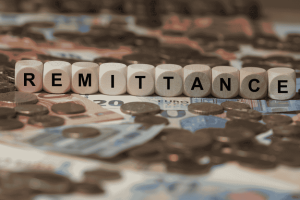Are you standing at the edge of the investment pool, hesitant to dip your toes in the water? You’re not alone. Many first-time investors across Southeast Asia feel overwhelmed when considering where to put their hard-earned money. With rising living costs in cities like Singapore, Bangkok, and Kuala Lumpur, finding ways to grow your wealth has never been more important.
The good news? You don’t need to be a financial genius to start investing successfully for the long term. Whether you’re a young professional in Manila saving for your first home, or a middle-income family in Jakarta looking to fund your children’s education, this guide will help you navigate the investment landscape with confidence.
Long-term investing isn’t about getting rich quickly—it’s about making smart, consistent choices that compound over time. By the end of this article, you’ll have practical, actionable strategies to begin your investment journey toward lasting financial growth.
Why Long-Term Investment Matters for Southeast Asians

Before diving into specific tips, let’s understand why long-term investing is particularly relevant for you as a Southeast Asian investor.
The Power of Time in Your Investment Journey
Time is your greatest ally when investing. The longer your money works for you, the more you benefit from compound interest—what Einstein allegedly called the “eighth wonder of the world.”
Did you know? If you invest $200 monthly with an 8% average annual return, after 30 years you’ll have approximately $300,000, despite only contributing $72,000 yourself. The remaining $228,000 comes from compound growth!
Regional Economic Growth as Your Tailwind
Southeast Asia’s economies are projected to grow significantly in the coming decades. According to the Asian Development Bank, the ASEAN region is expected to become the world’s fourth-largest economy by 2030. By investing long-term, you position yourself to benefit from this regional economic expansion.
Combating Regional Inflation Challenges
With inflation rates in countries like the Philippines, Indonesia, and Vietnam often exceeding bank interest rates, simply saving money in a traditional bank account means your purchasing power actually decreases over time. Long-term investing helps you stay ahead of inflation and preserve your wealth.
7 Essential Investment Tips for Southeast Asian Beginners
1. Start With an Emergency Fund Before Investing
Before you put a single dollar into investments, ensure you have 3-6 months of living expenses saved in an easily accessible emergency fund.
Why this matters for you: Southeast Asia’s developing social safety nets mean you need to create your own financial buffer. Medical emergencies, job loss, or family needs can arise unexpectedly, and you don’t want to be forced to sell investments at a loss during market downturns.
Action step: Calculate your monthly expenses and multiply by 3-6. Set up an automatic transfer to a separate high-yield savings account until you reach this target.
2. Understand Your Investment Goals and Time Horizon
Different goals require different investment approaches. Are you saving for:
- Retirement in 30+ years?
- Children’s education in 10-15 years?
- A home purchase in 5 years?
- A wedding in 2 years?
Your time horizon affects your investment strategy. The longer your time horizon, the more risk you can typically afford to take, as you have more time to recover from market downturns.
Investment time horizon guide:
| Time Horizon | Suggested Asset Allocation | Example Goals |
| 0-2 years | 80-100% cash/fixed deposits | Emergency fund, wedding, travel |
| 3-5 years | 60-70% fixed income, 30-40% stocks | Home down payment, car purchase |
| 6-10 years | 40-60% stocks, 40-60% fixed income | Children’s education, career break |
| 10+ years | 70-90% stocks, 10-30% fixed income | Retirement, financial independence |
3. Embrace Low-Cost Index Funds for Simplicity and Diversification
As a beginner, one of the smartest moves you can make is investing in low-cost index funds or Exchange-Traded Funds (ETFs).
Why index funds work well for Southeast Asian investors:
- Instant diversification across hundreds or thousands of companies
- Lower fees than actively managed funds (often 0.1-0.3% versus 1-2%)
- Simplicity in selection and management
- Historically outperform most actively managed funds over long periods
Regional options to consider:
- Singapore: SPDR STI ETF or Nikko AM Singapore STI ETF
- Malaysia: MyETF MSCI Malaysia Islamic Dividend
- Indonesia: IDX30 ETF
- Global exposure: Vanguard Total World Stock ETF or iShares Core MSCI World ETF
4. Practice Dollar-Cost Averaging to Reduce Timing Risk
Rather than trying to time the market (which even professionals struggle with), invest a fixed amount regularly, regardless of market conditions.
Why this works especially well in Southeast Asia’s volatile markets:
- Removes emotional decision-making during market fluctuations
- Automatically buys more shares when prices are low
- Creates discipline in your investment approach
- Smooths out the impact of market volatility
How to implement this: Set up an automatic monthly transfer from your salary account to your investment account. Many brokerages in Singapore, Malaysia, and Thailand now offer Regular Savings Plans that automate this process for as little as $100 per month.
5. Diversify Across Asset Classes and Geographies

While your home markets in Southeast Asia offer growth opportunities, don’t put all your eggs in one basket. Consider diversifying across:
Asset classes:
- Stocks: For long-term growth
- Bonds: For stability and income
- REITs: For property exposure without buying physical real estate (particularly relevant in property-focused economies like Singapore)
Geographical regions:
- Local markets: For familiarity and potential tax advantages
- Developed markets: For stability (US, Europe, Japan)
- Emerging markets: For higher growth potential (including other parts of Asia)
A simple starter portfolio for a Southeast Asian investor might look like:
- 40% broad global stock index fund
- 20% regional Southeast Asia fund
- 20% bond fund
- 10% REIT index
- 10% cash/emergency fund
6. Minimize Investment Costs and Taxes
Fees and taxes can significantly erode your returns over time. Be strategic about minimizing both:
Investment costs to watch:
- Management fees: Choose low-cost index funds when possible
- Transaction fees: Consider fee structures when selecting a brokerage
- Foreign exchange costs: Be aware of currency conversion fees when investing internationally
Tax considerations by country:
- Singapore: No capital gains tax, but dividends may be taxed at the corporate level
- Malaysia: No capital gains tax on stocks, but real property gains tax applies
- Thailand: No capital gains tax for individuals on local stocks, but 15% withholding tax on dividends
- Philippines: 0.6% stock transaction tax plus 10% tax on dividends
- Indonesia: 0.1% transaction tax on stocks, 10% tax on dividends for residents
Many Southeast Asian countries offer tax-advantaged investment accounts similar to retirement accounts. Examples include Singapore’s Supplementary Retirement Scheme (SRS) and Malaysia’s Private Retirement Schemes (PRS). These can provide significant tax benefits for long-term investors.
7. Stay the Course: Emotional Discipline is Key
Perhaps the most important tip of all is to maintain emotional discipline during market volatility.
Historical perspective: The Asian Financial Crisis of 1997, the Global Financial Crisis of 2008, and the COVID-19 market crash of 2020 all caused significant temporary declines. Yet markets recovered and reached new highs in the years that followed.
How to maintain discipline:
- Avoid checking your investments daily – this can lead to emotional decisions
- Remember your time horizon – short-term volatility matters less for long-term goals
- Consider automating investments to remove emotion from the equation
- Have a written investment plan to refer to during market turbulence
Building Your Investment Knowledge:
Essential Resources for Southeast Asian Investors
Embarking on your investment journey? Strengthen your foundation with these region-specific platforms designed to help beginners make informed decisions.
Online Learning Platforms
Explore financial education tailored to your country:
- Seedly (Singapore) – A vibrant community with insights on budgeting, investing, and personal finance.
- Ringgit Oh Ringgit (Malaysia) – A personal finance blog simplifying money matters for Malaysians.
- The Investing Mom (Philippines) – Empowering Filipino women and families through investment education.
- Finansialku (Indonesia) – Offers financial planning tools, courses, and expert advice in Bahasa Indonesia.
Beginner-Friendly Investment Apps
These platforms combine accessible learning with easy-to-use investment tools—ideal for first-time investors:
- Syfe (Singapore) – Robo-advisory with goal-based portfolios and low fees.
- StashAway (Singapore, Malaysia, Thailand) – A data-driven robo-advisor offering personalized investment plans.
- Wahed Invest (Malaysia) – Focuses on Shariah-compliant investing for ethical investors.
- Bibit (Indonesia) – A smart investing app designed to simplify mutual fund investing.
- GCash Invest (Philippines) – Lets users invest directly from the popular GCash mobile wallet.
These resources make investing more approachable by combining financial education with low-barrier entry points. Whether you’re learning the basics or ready to make your first investment, these tools can guide you every step of the way.
Common Investment Mistakes to Avoid

Even with the best intentions, new investors often fall into predictable traps. Here are some pitfalls particularly relevant to Southeast Asian investors:
Chasing “Hot Tips” and Market Trends
The coffee shop investment tip or the latest cryptocurrency craze might seem tempting, but these rarely lead to sustainable long-term returns. Focus on fundamentals rather than fads.
Investing Before Clearing High-Interest Debt
In countries like the Philippines and Indonesia, credit card interest rates can exceed 30%. If you’re carrying high-interest debt, prioritize paying it off before investing. The guaranteed “return” from avoiding interest payments often exceeds potential investment gains.
Neglecting Insurance Before Investing
In regions with limited social safety nets, proper insurance coverage should come before investing. Ensure you have adequate health, life, and disability insurance to protect your financial foundation.
Overconcentration in Property
Many Southeast Asian cultures strongly favor property investment. While real estate can be valuable, overconcentrating in physical property creates liquidity risks and reduces diversification. Consider REITs as a more liquid, diversified alternative.
Creating Your Personal Investment Plan
Now that you understand the fundamentals, it’s time to create your own investment roadmap:
Step 1: Define Your Financial Goals
Write down specific goals with amounts and timeframes. For example: “Save $50,000 for a home down payment in 5 years” or “Build a retirement fund of $500,000 in 30 years.”
Step 2: Assess Your Risk Tolerance
Be honest about how much volatility you can handle. Consider both your:
- Financial capacity for risk: Your age, income stability, and time horizon
- Emotional tolerance for risk: How well you sleep during market downturns
Step 3: Choose Your Asset Allocation
Based on your time horizon and risk tolerance, determine your mix of stocks, bonds, and other assets using the table provided earlier.
Step 4: Select Specific Investments
Choose low-cost, diversified funds that match your asset allocation. Start simple—you can always add complexity as your knowledge grows.
Step 5: Set Up Automatic Investments
Establish regular contributions that align with your payday to ensure consistency.
Step 6: Schedule Regular Reviews
Plan to review your portfolio every 6-12 months, rebalancing if your asset allocation has drifted significantly from your target.
Conclusion: Your Journey to Financial Growth Starts Now
Long-term investing isn’t about finding the next “hot stock” or getting rich overnight. It’s about making consistent, informed decisions that align with your financial goals and time horizon. By following these seven simple tips—starting with an emergency fund, understanding your goals, embracing index funds, practicing dollar-cost averaging, diversifying wisely, minimizing costs, and maintaining discipline—you’re setting yourself up for long-term financial success.
Remember that investing is a personal journey. What works for your colleague or family member might not be right for you. Take the time to understand your own financial situation, goals, and risk tolerance before making investment decisions.
The best time to start investing was ten years ago. The second-best time is today. Even small amounts invested consistently can grow significantly over time thanks to the power of compounding.









